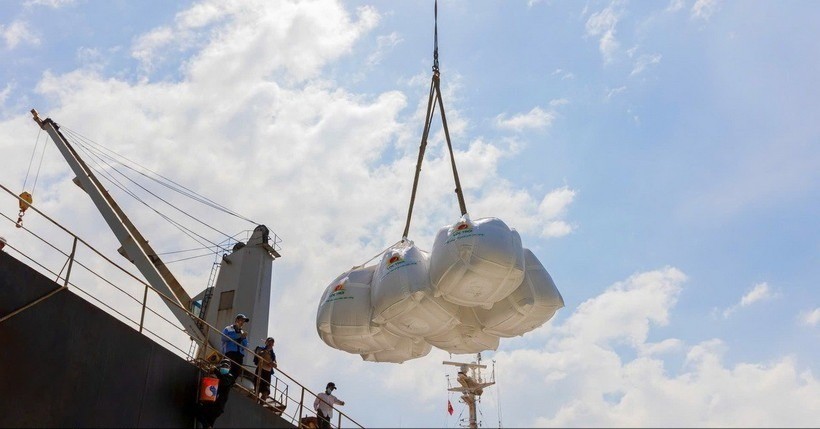
According to the Vietnam Food Association, as of October 15th, rice exports had reached over 7 million tons.
However, the domestic rice market recorded a price decrease due to the slowing purchasing activities of export enterprises. The Asian region also tended to be quiet due to weak exports.
Specifically, as of October 15th, rice exports reached 7.022 million tons with a value of 3.588 billion USD, a decrease of 4.4% in quantity and 21.94% in value compared to the same period in 2024.
Last week, the price of fragrant rice with 5% broken grains was at $420-$435 per ton, unchanged from the previous week and near its lowest level in two months.
A trader in Ho Chi Minh City said that domestic trading activity was quite sluggish as many export businesses reduced their rice purchases from farmers due to weak foreign demand.
Regarding the domestic market, according to the Vietnam Food Association, fragrant paddy rice fetched the highest price at 5,650 VND/kg, with an average price of 5,379 VND/kg, a decrease of 21 VND/kg compared to the previous week. Conversely, regular rice increased by 46 VND/kg, with an average price of 5,161 VND/kg.
Regarding raw rice: brown rice grade 1 has the highest price at 8,750 VND/kg, with an average price of 8,175 VND/kg, a decrease of 213 VND/kg; grade 2 has the highest price at 8,050 VND/kg, with an average price of 7,964 VND/kg, a decrease of 218 VND/kg. White milled rice grade 1 decreased by 120 VND/kg (highest price 9,750 VND/kg), grade 2 decreased by 105 VND/kg (highest price 9,050 VND/kg).
According to the Institute of Agricultural and Environmental Strategy and Policy, in Can Tho, Jasmine rice is still priced at 8,400 VND/kg, the same as last week; OM 18 is 6,800 VND/kg; IR 5451 rice is 6,200 VND/kg; and ST25 is 9,400 VND/kg.
In An Giang province, according to the Department of Agriculture and Environment, the prices of fresh rice varieties are as follows: IR 50404 is purchased at 4,800 - 5,000 VND/kg, a decrease of 200 VND/kg; OM 5451 at 5,300 - 5,500 VND/kg, a decrease of 100 VND/kg; OM 18 at 5,500 - 5,700 VND/kg, a decrease of 300 VND/kg; Dai Thom 8 at 5,600 - 5,800 VND/kg, a decrease of 200 VND/kg; OM 380 at approximately 5,700 - 5,900 VND/kg.
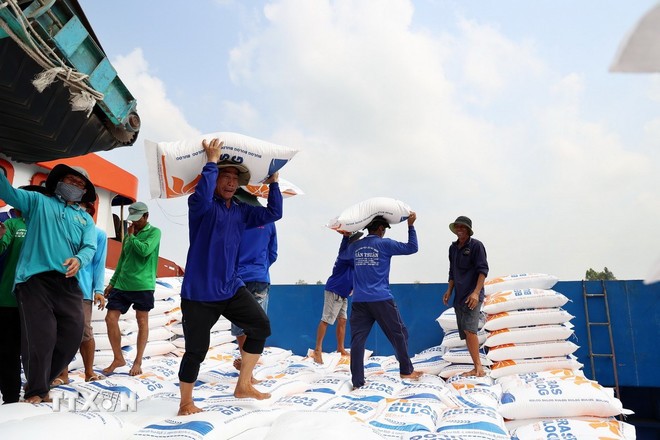
In the An Giang retail market, rice prices are mostly stable: regular rice 12,000 - 14,000 VND/kg; Thai fragrant rice 20,000 - 22,000 VND/kg; Jasmine rice 16,000 - 18,000 VND/kg; white rice 16,000 VND/kg, Nang Hoa rice 21,000 VND/kg, Huong Lai rice 22,000 VND/kg, Taiwanese fragrant rice 20,000 VND/kg, regular Soc rice 17,000 VND/kg, Thai Soc rice 20,000 VND/kg, Japanese rice 22,000 VND/kg.
The price of IR 504 raw rice remains at 8,100 - 8,250 VND/kg, while finished IR 504 rice is priced at 9,500 - 9,700 VND/kg; OM 380 raw rice is priced at 7,800 - 7,900 VND/kg; finished OM 380 rice fluctuates between 8,800 - 9,000 VND/kg.
For by-products, the prices of various by-products range from 7,250 to 10,000 VND/kg. The price of dry bran is 9,000 to 10,000 VND/kg.
Regarding production, according to the Ministry of Agriculture and Environment, as of October 20th, provinces and cities in the Mekong Delta region had planted 1.239 million hectares of rice for the 2025 Summer-Autumn crop (1.854 million hectares in the entire Southern region) and had completed harvesting, with an average yield of 60.58 quintals/hectare, and an estimated production of 7.509 million tons of rice (10.779 million tons in the entire Southern region).
For the Autumn-Winter crop, localities have planted 763,000 hectares, reaching 102.8% of the planned 74,200 hectares; of which 263,000 hectares have been harvested, with an average yield of 56.77 quintals/hectare, and a total production of approximately 1.492 million tons. For the 2025 Summer crop, 144,000 hectares have been planted, equivalent to 81.95% of the plan. For the 2025-2026 Winter-Spring crop, the entire region has so far planted 54,000 hectares out of a total planned 1.266 million hectares.
In the Asian rice market, Indian rice exports edged up from their lowest level in over nine years, thanks to a stronger rupee, although demand remained weak. Meanwhile, Thai rice prices continued to fall for the sixth consecutive week, reaching an 18-year low due to sluggish buying activity.
A trader in Kolkata, India, said that very few export contracts were signed last week because buyers were not in a hurry to place orders, waiting for prices to fall further.
Indian parboiled rice with 5% broken grains is being offered at $344-$350 per ton, up from $340-$345 per ton last week. Indian white rice with 5% broken grains is being offered at $360-$370 per ton, slightly higher than the lowest level since May 2016 recorded last week.
In Thailand, the price of 5% broken rice stood at $337 per ton, showing little change from last week's price of $335-$340 per ton – the lowest level since October 2007.
A trader in Bangkok said demand remains very weak, with no major transactions this week, while abundant supply is helping to keep prices low.
Meanwhile, Bangladesh is increasing rice imports to cool down domestic prices. The country has signed a contract to purchase 50,000 tons of white rice from Myanmar at $376.5 per ton under a government agreement, along with 50,000 tons of parboiled rice through an international tender at $355.99 per ton.
The US agricultural market showed that US soybean prices fell in the final trading session of the week on October 24th, retreating from their highest level in a month, pressured by declining crude oil prices and farmer selling, as investors awaited upcoming trade negotiations between the US and China – the world's largest soybean importer.
Corn and wheat prices also fell simultaneously as the harvest season reached its peak in the Midwest.
Specifically, at the close of trading on October 24th, the price of soybeans for November 2025 delivery on the Chicago Board of Trade (CBOT) fell 3 cents to $10.41 per bushel, after reaching its highest level since September 19th at $10.45 per bushel. The price of corn for December 2025 delivery fell 4.75 cents to $4.23 per bushel, while the price of wheat for December 2025 delivery also lost 0.5 cents to $5.12 per bushel (1 bushel of wheat/soybeans = 27.2 kg; 1 bushel of corn = 25.4 kg).
According to analysts, soybean and corn prices are under downward pressure as the price surge earlier this week triggered a wave of selling from producers.
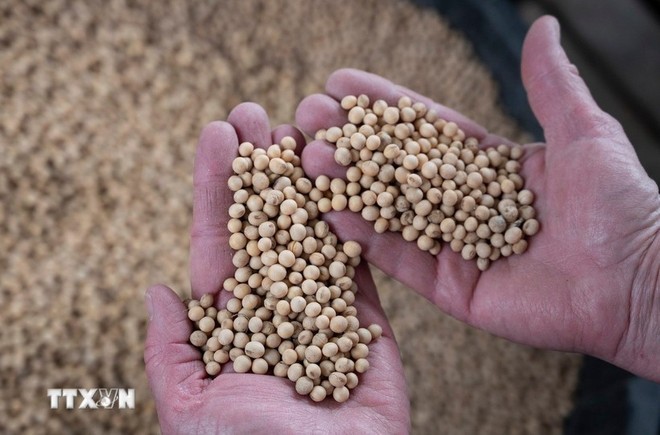
Furthermore, trading activity was relatively quiet as investors awaited new signals regarding US-China trade relations. China has so far avoided buying US soybeans this crop year, instead increasing soybean imports from South America.
US President Donald Trump is expected to meet with Chinese President Xi Jinping in South Korea next week, on the sidelines of the Asia-Pacific Economic Cooperation (APEC) summit.
Mr. Trump emphasized that China's purchase of American soybeans would be a central topic in the discussions.
On October 24, senior economic officials from both countries arrived in Malaysia for talks aimed at preventing escalating bilateral trade tensions and preparing for a meeting between the two countries' leaders next week.
US Treasury Secretary Scott Bessent and US Trade Representative Jamieson Greer will meet with Chinese Vice Premier He Lifeng to find solutions to advance this process.
A U.S.-China trade deal, if reached, could help American farmers avoid heavy losses. However, opportunities for new orders are shrinking.
Ishan Bhanu, an agricultural commodities analyst at market analysis firm Kpler, commented: “If the agreement is signed in early November 2025, China could place orders for delivery in the second half of December 2025 or January 2026. But after February 2026, Brazil’s new soybean crop will begin to enter the market, increasing competition for US agricultural products.”
The global coffee market closed the week with mixed results. Robusta coffee prices on the London exchange (UK) rose slightly, by $17/ton, closing at $4,571/ton. Conversely, Arabica coffee prices on the New York exchange (USA) fell slightly by 1.70 US cents/lb, closing at 403.00 cents/lb (1 lb = 0.4535 kg).
Arabica coffee prices fell after Climatempo forecasts rain over the weekend in Brazil's coffee-growing regions. Additionally, traders expect the US to soon lift its 50% tariff on Brazilian imports – a factor that could put downward pressure on coffee prices.
Last week, U.S. Trade Representative Jamieson Greer said he and U.S. Secretary of State Marco Antonio Rubio had a “very positive exchange” with Brazilian Foreign Minister Mauro Vieira on trade issues. Both sides indicated they would soon arrange a meeting between President Donald Trump and Brazilian President Lula da Silva.
Nevertheless, coffee prices still have some supporting factors. The market remains concerned about the prolonged drought in Brazil during the crucial flowering stage of the coffee plant, which could affect the 2026-2027 crop.
According to Bloomberg's weather analysis in Brazil, the country's coffee-growing regions are experiencing a severe drought, with the state of Minas Gerais recording only about 70% of the average rainfall for the past month.
In addition, coffee prices were supported by declining inventories at warehouses supervised by the Intercontinental Exchange (ICE).
US importers are currently canceling orders for Brazilian coffee due to high tariffs, tightening domestic supply, especially since Brazil accounts for about one-third of the US's unroasted green coffee beans.
Source: https://baolaocai.vn/hiep-hoi-luong-thuc-viet-nam-xuat-khau-gao-dat-hon-7-trieu-tan-post885348.html





![[Photo] Prime Minister Pham Minh Chinh holds a phone call with the CEO of Russia's Rosatom Corporation.](/_next/image?url=https%3A%2F%2Fvphoto.vietnam.vn%2Fthumb%2F1200x675%2Fvietnam%2Fresource%2FIMAGE%2F2025%2F12%2F11%2F1765464552365_dsc-5295-jpg.webp&w=3840&q=75)
![[Photo] Closing Ceremony of the 10th Session of the 15th National Assembly](/_next/image?url=https%3A%2F%2Fvphoto.vietnam.vn%2Fthumb%2F1200x675%2Fvietnam%2Fresource%2FIMAGE%2F2025%2F12%2F11%2F1765448959967_image-1437-jpg.webp&w=3840&q=75)

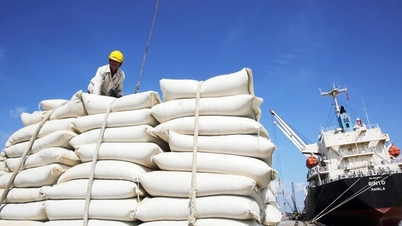

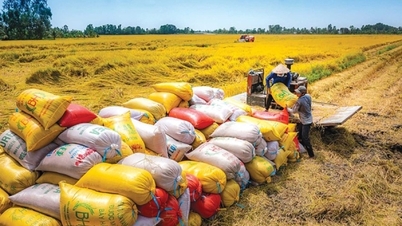

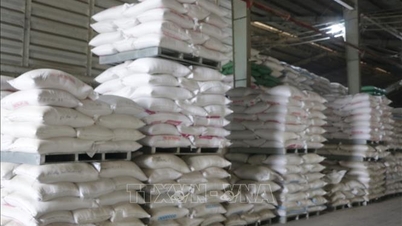

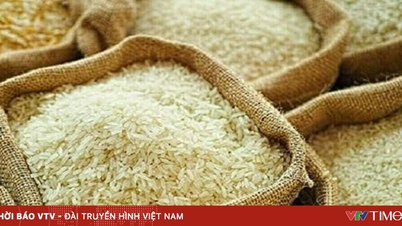

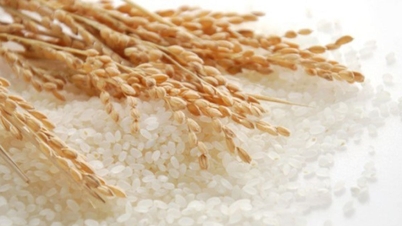

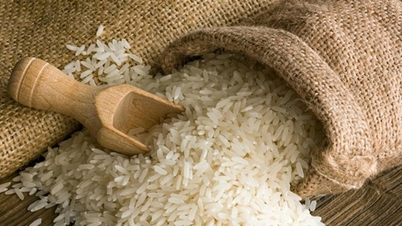





























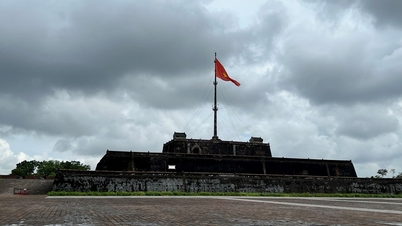















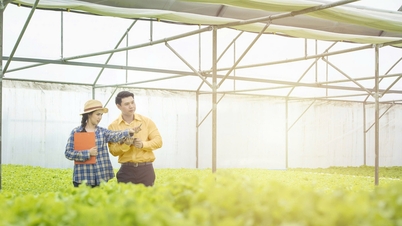
















































Comment (0)